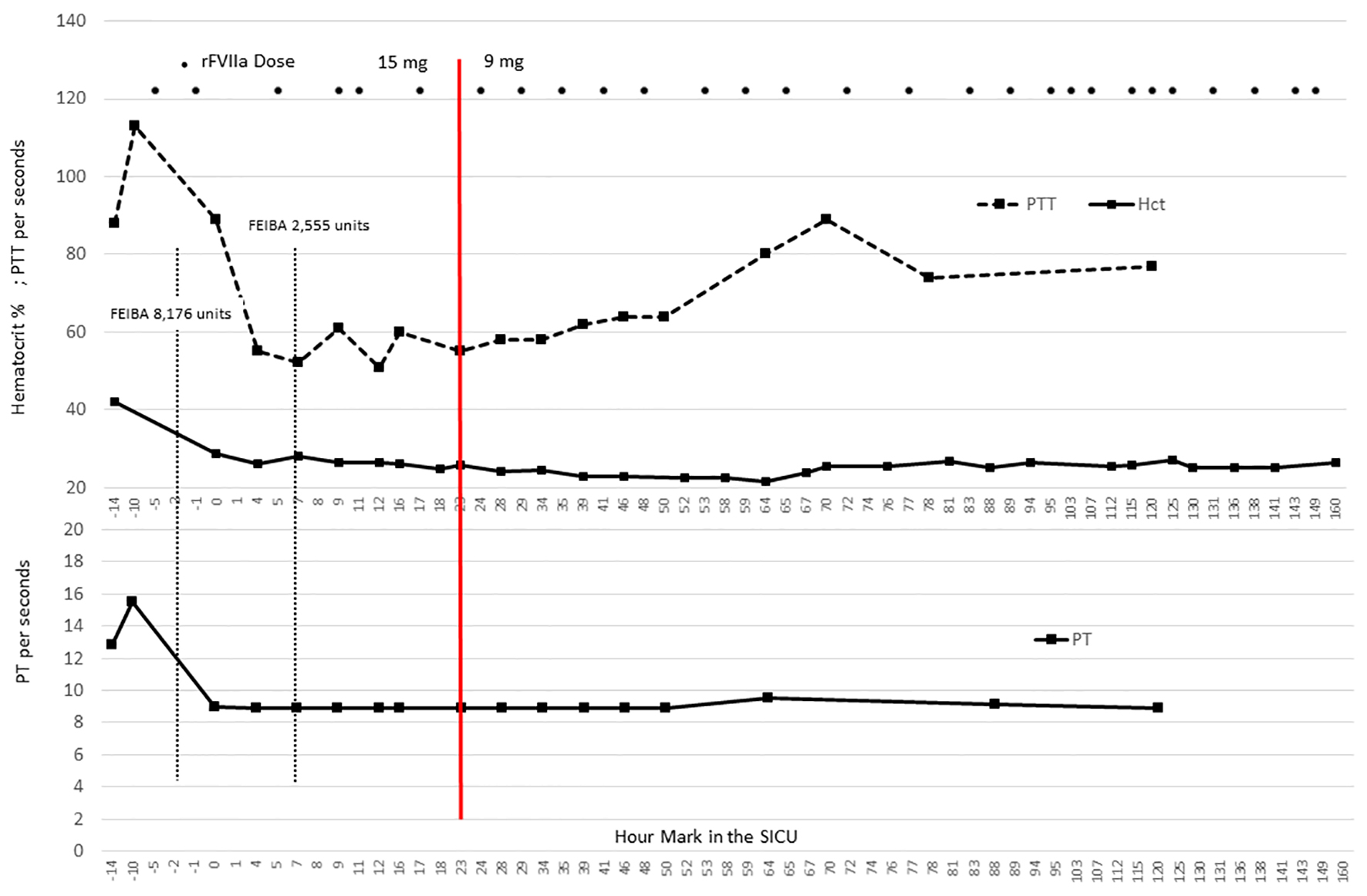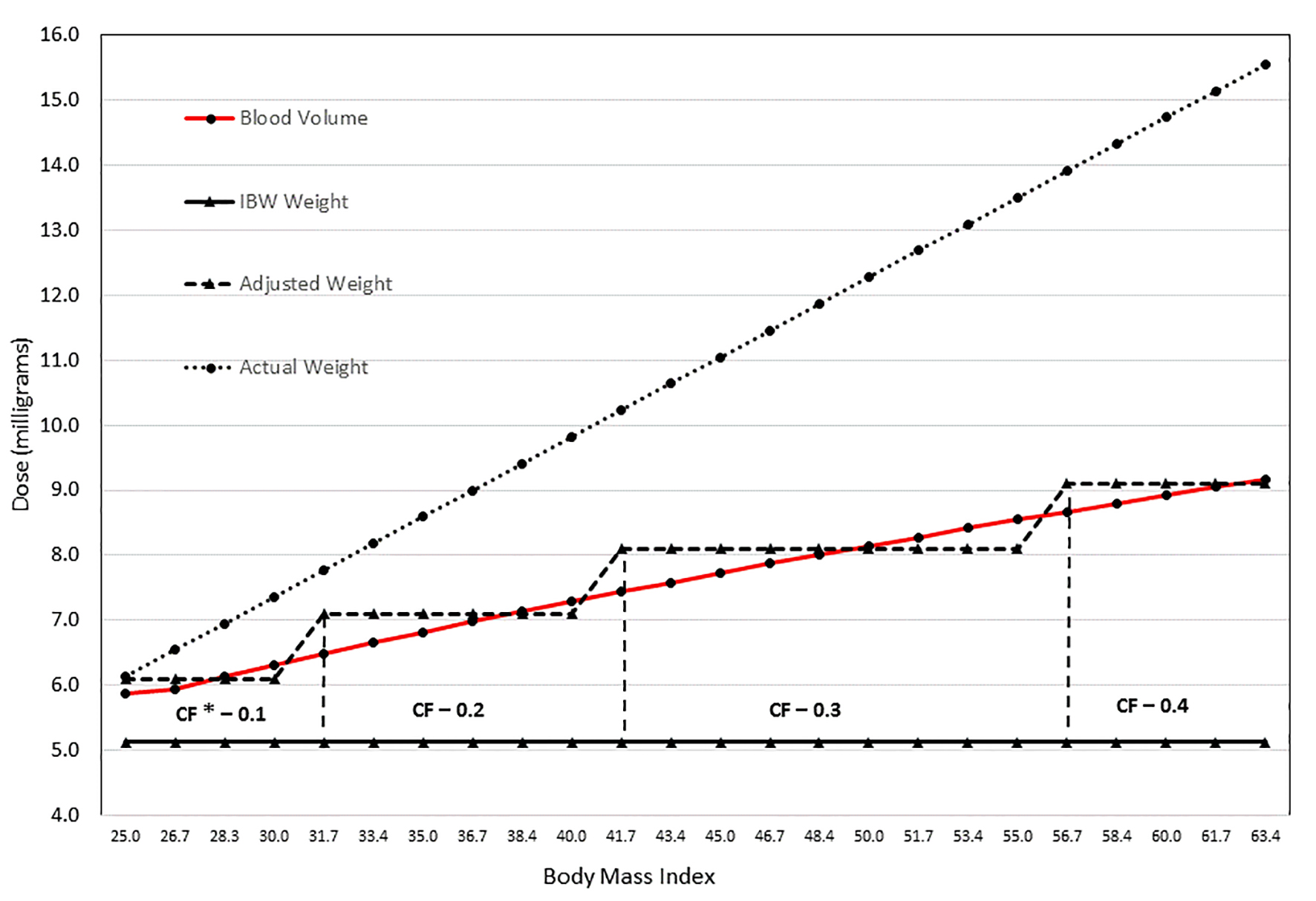| Body mass index (BMI) | kg/m2
167 kg weight, 167 cm height
BMI = 61 kg/m2 | | Considered extreme obesity by NIH guidelines |
| Actual body weight | 167 kg | 90 μg/kg × 167 kg
Dose = 15,030 μg | Dose assumes blood volume increases proportionately with actual body weight |
| Ideal body weight (IBW) | Females = 45.5 kg + (2.3 kg × every inch > 60)
IBW = 57 kg | 90 μg/kg × 57 kg
Dose = 5,130 μg | Assumes no increase in blood volume with increase adipose |
| Dose based on blood volume [5] | = 70 mL/kg/(SQRT (patient BMI (kg/m2)/22)
Explanation of variables within equation:
Indexed blood volume healthy adults = 70 mL/kg
BMI for patient divided by 22 accounts for deviation from IBW | = 70/(SQRT (61/22) = 70/1.665 = 42 mL/kg
Standard blood volume estimate by actual weight:
= 70 mL/kg × 167 kg = 11,690 mL
Indexed blood volume by actual weight:
= 42 mL/kg × 167 kg = 7,014 mL
Solve for “x” using ratio for indexed dose:
(x/7,014 mL) = (15 mg/11,690 mL)
x = (15 mg × 7,014 mL)/11,690 mL = 9 mg ( 9,000 μg) | The blood volume corrected for increasing BMI by Lemmens et al [5] formula is 40% lower than the uncorrected empiric estimate of 70 mL/kg used for non-obese adults.
This line of reasoning assumes that plasma volume change is equal to blood volume change. |
| Adjusted body weight | IBW + (CF (Actual Body Weight - IBW))
57 + (0.4 (167 - 57))
57 + 44 = 101 kg | 90 μg/kg × 101 kg
Dose = 9,090 μg | Adjusted body weight with a correction factor of 0.4 compares closely with change in blood volume estimation by Lemmens et al [5] |

